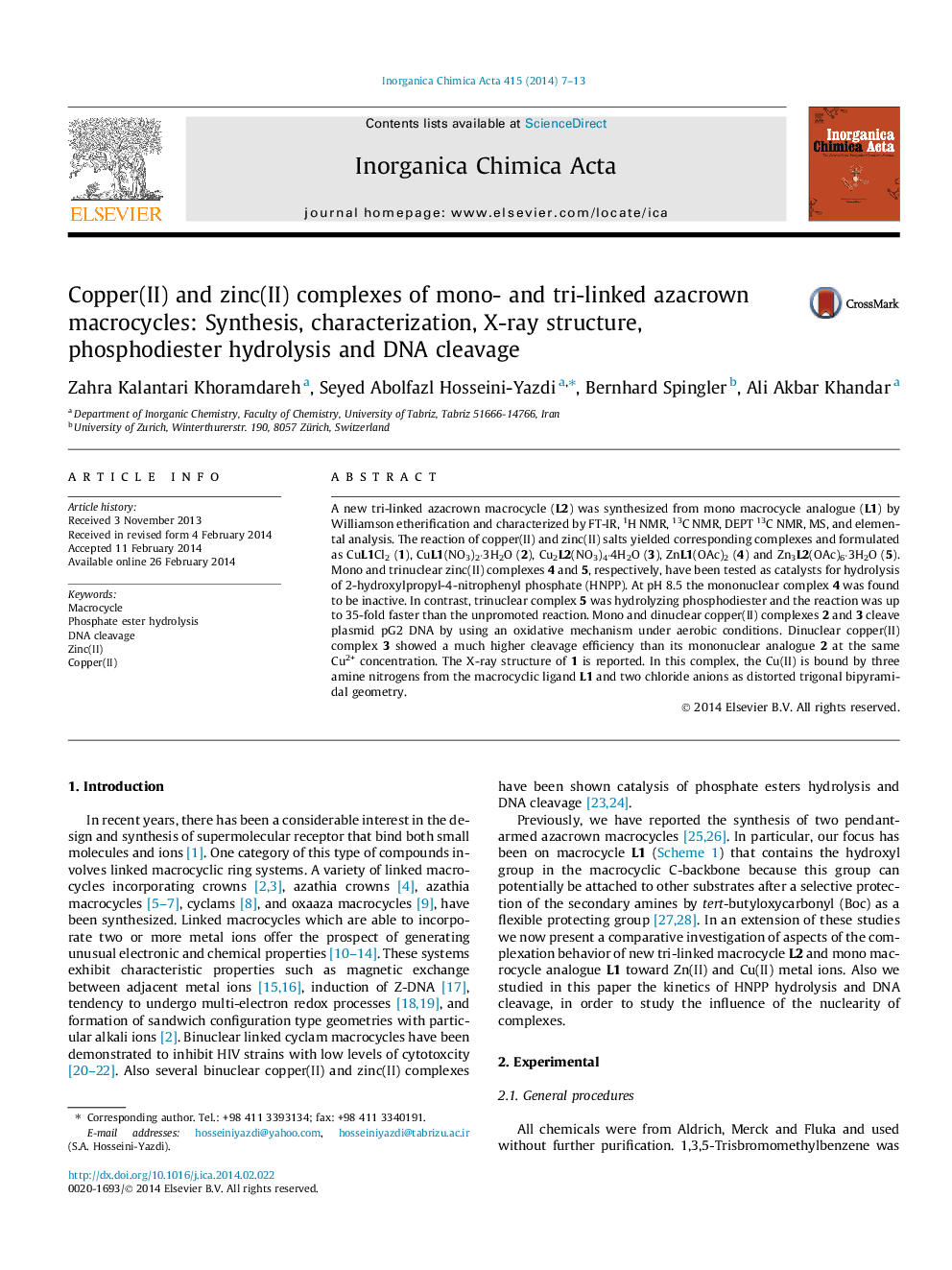| Article ID | Journal | Published Year | Pages | File Type |
|---|---|---|---|---|
| 1305602 | Inorganica Chimica Acta | 2014 | 7 Pages |
•A new tri-linked azacrown macrocycle was synthesized.•Trinuclear Zn complex displayed good hydrolytic activity for phosphate diester.•Mono and dinuclear copper(II) complexes cleaved plasmid pG2 DNA.
A new tri-linked azacrown macrocycle (L2) was synthesized from mono macrocycle analogue (L1) by Williamson etherification and characterized by FT-IR, 1H NMR, 13C NMR, DEPT 13C NMR, MS, and elemental analysis. The reaction of copper(II) and zinc(II) salts yielded corresponding complexes and formulated as CuL1Cl2 (1), CuL1(NO3)2·3H2O (2), Cu2L2(NO3)4·4H2O (3), ZnL1(OAc)2 (4) and Zn3L2(OAc)6·3H2O (5). Mono and trinuclear zinc(II) complexes 4 and 5, respectively, have been tested as catalysts for hydrolysis of 2-hydroxylpropyl-4-nitrophenyl phosphate (HNPP). At pH 8.5 the mononuclear complex 4 was found to be inactive. In contrast, trinuclear complex 5 was hydrolyzing phosphodiester and the reaction was up to 35-fold faster than the unpromoted reaction. Mono and dinuclear copper(II) complexes 2 and 3 cleave plasmid pG2 DNA by using an oxidative mechanism under aerobic conditions. Dinuclear copper(II) complex 3 showed a much higher cleavage efficiency than its mononuclear analogue 2 at the same Cu2+ concentration. The X-ray structure of 1 is reported. In this complex, the Cu(II) is bound by three amine nitrogens from the macrocyclic ligand L1 and two chloride anions as distorted trigonal bipyramidal geometry.
Graphical abstractA new tri-linked macrocycle (L2) was synthesized from mono macrocycle analogue (L1). The reaction of copper(II) and zinc(II) salts yielded corresponding complexes. This work is a good example of the design of multinuclear complexes for artificial nucleases and DNA cleavage.Figure optionsDownload full-size imageDownload as PowerPoint slide
